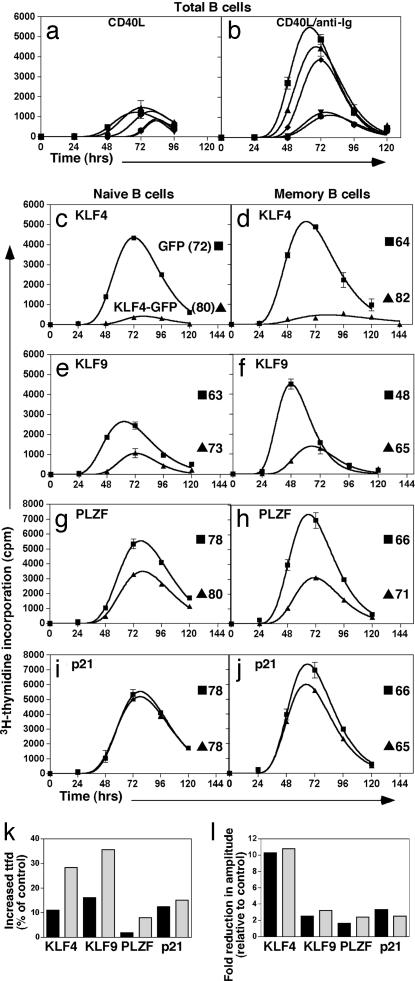Fig. 4.
ttfd analysis of subsets of B cells transfected with genes differentially expressed by naïve and memory B cells. (a and b) B cells were transfected with plasmids encoding KLF4-GFP (▾), KLF9-GFP (●), PLZF-GFP (◆), p21-GFP (▴), or GFP alone (■). GFP+ cells were isolated and then cultured with CD40L alone (a) or CD40L plus anti-Ig (b) in the presence of demecolcine. ttfd was determined as described for Fig. 1. (c–j) Transfected naïve (■; Left) and memory (■; Right) B cells expressing KLF4-GFP (c and d), KLF9-GFP (e and f), PLZF-GFP (g and h), p21-GFP (i and j), or GFP alone (▴) were isolated and cultured with CD40L and anti-Ig in the presence of demecolcine. ttfd was determined as described for Fig. 1. The values in c–j represent the ttfd for transfected B cells. (k) The relative effect (% change compared with control cultures) of overexpressing KLF4, KLF9, and PLZF on ttfd of naïve (black bars) and memory B cells (gray bars). (l) The fold change in amplitude of the response of naïve (black bars) and memory (gray bars) B cells overexpressing KLF4, KLF9, or PLZF relative to naïve and memory cells transfected with the vector control. Similar results were obtained in at least two independent experiments.

